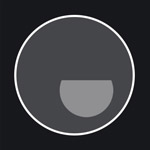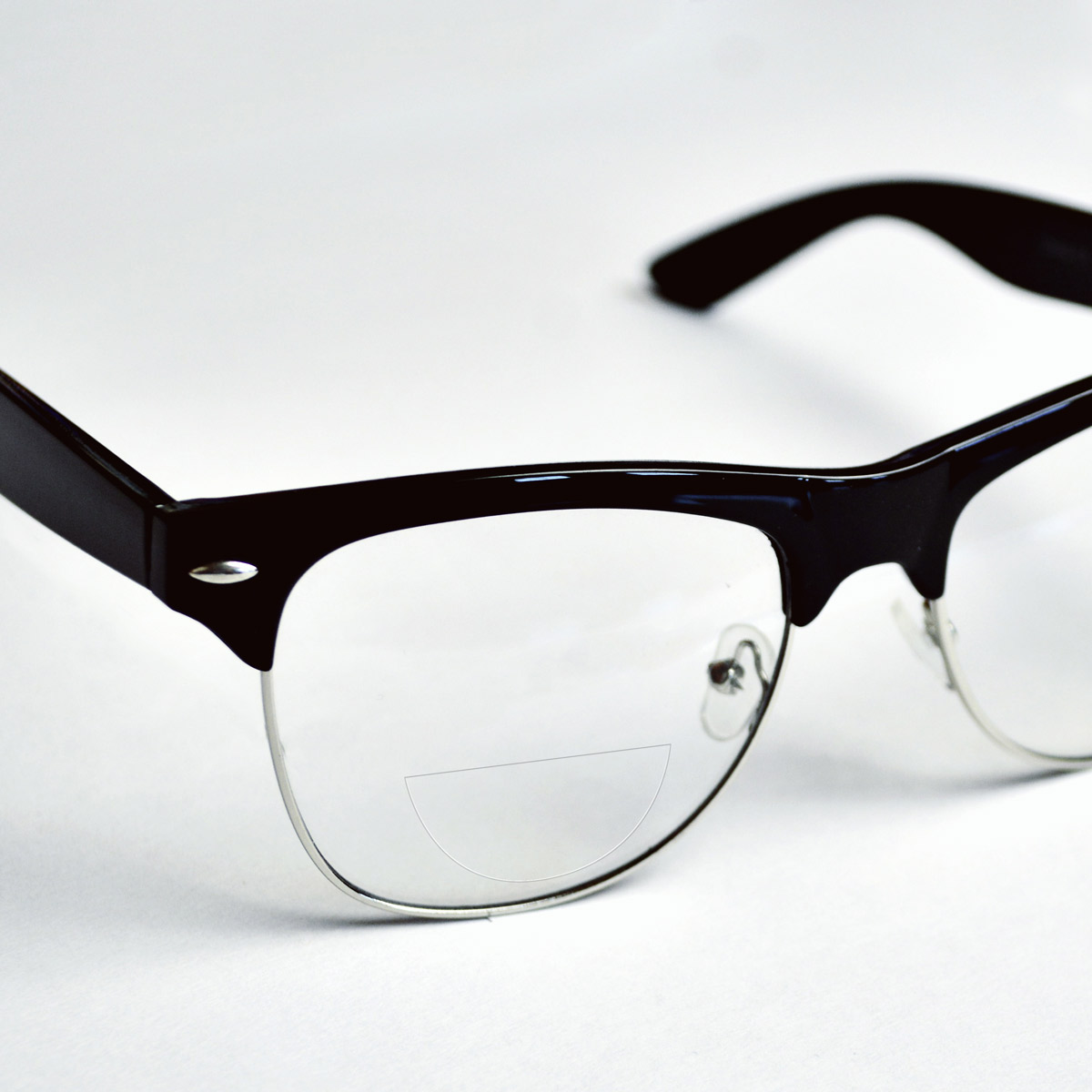As the name implies, bifocal lenses have two separate lenses combined into one lens. The lens typically looks like a single vision lens with another smaller lens fused onto the lower portion, known as the segment which is typically used at a fixed near viewing distance, most commonly 40cm for reading.
Depending on occupational needs, the bifocal segment can be power adjusted and positioned to perfectly suit the wearers’ specific requirements. These lenses are available in a variety of wider segments, materials and tints.
Types
Flat-Top Lenses are also known as the "D" style bifocal lens. This type of lens has a magnifying area in the lower part of the lens that resembles a letter D turned on its side, with the flat side up. This is among the easiest of bifocal lenses to adapt to. It can also be produced in any lens material. The flat top of the lens provides a definite transition between the lower portion of the lens, typically for near vision, and the upper portion of the lens, typically used for distance vision. This lens is available in a variety of segment sizes, but commonly 28mm, and when a wider reading are is needed, it can be made to 35mm.
Kryptok Lenses, also referred to as a round lens, the magnifying area in the lower part of the lens is a complete circle. The lens can restrict viewing up top, due to the round shape. There is less significant transition between reading and distance vision. The segment diameter in these lenses is typically 25mm
Curved Top Lenses are also known as the C-style, the magnification area is similar to the "D" style lens. However, the top of the area is slightly curved upward. The rounded corners on the segment are often marketed as enhancing peripheral vision.
Franklin, or Executive type Bifocal lenses most closely resemble the original bifocal lenses invented by Benjamin Franklin. This lens is often used as an occupational lens for those who do a lot of reading. Because the magnification area is so large, this style of lens offers the widest reading range of any bifocal type.
Materials
These lenses are available in a variety of materials including Glass, and a variety of different Plastic materials with different optical properties. Barium Crown Glass is the glass that has been used for bifocal lenses, where the segment portion is made of denser flint glass.
Technological and chemical advancements have produced Plastic materials that are well suited to spectacle lenses The plastic material most commonly used is known as CR39 ( "Columbia Resin 39"). It is a thermal-cured plastic developed in the early 1940s. CR-39 plastic remains a popular material for spectacle lenses because of its light weight (about half the weight of glass), low cost and excellent optical qualities.
Polycarbonate Material developed in the early 1970s, is also used due to its incredible impact resistance. Polycarbonate lenses became increasing popular and remain so today. This material is used for helmet visors for the Air Force, for "bulletproof glass" for banks and other safety applications, polycarbonate is lighter and significantly more impact-resistant than CR-39 plastic, making it a good material for children's eyewear, safety glasses and sports eyewear.
A newer lightweight lens material with similar impact-resistant properties as polycarbonate called Trivex was introduced for eyewear in 2001. The advantage of this material is its superior optical properties compared to polycarbonate.
Refractive Index
The refractive index of lenses refers to the light bending properties of the specific material. The more “dense” the material, the higher the refractive index. For example, Air has a refractive index of 1. And pure water has a refractive index of 1.33, and the densest clear material known to man is a diamond, which has a refractive index of 2.4. the higher refractive index also means the specific material reflects light more, as the light cannot enter it easily due to the increased density of the material, that is why diamonds “sparkle” as they do because they reflect the light more.
The Refractive index of Glass ranges from 1.53, to 1.9. The Flint Glass which has the higher refractive index Is heavier than normal glass due to the higher specific gravity of the material. In Plastic, the refractive index ranges from 1.498 (CR-39 plastic) to 1.74 (a specific variety of high-index plastic). So, for the same prescription power and lens design, a lens made of CR-39 plastic will be the thickest and a lens made in 1.74 index plastic will be the thinnest.
The higher index lenses on the downside tend to reflect light more, and for this reason it is essential to treat the surfaces of these lenses with an Anti-reflective coating.
Tints
Tints of virtually any color can be applied to lenses. Lighter, fashion tints are often used for cosmetic purposes to enhance a wearer's looks. Darker tints allow the wearer to use the lenses as sunglasses. Color can be added to a lens as a solid tint, where the entire lens has the same color density, or as a gradient tint, where the color density is darkest at the top of the lens and gradually fades to clear or nearly clear at the bottom.
Different colors can be applied to lenses for different purposes. Yellow is often added to a lens to enhance contrast, especially in overcast conditions, making it a popular tint for hunters and for driving at night, but specifically during the twilight times just after sunset, and just before sunrise. Green, Green/grey, Grey, and Brown tints used in varying densities depending on user preference, are the most popular for sunglasses.
Various slight shades are sometimes added to lenses where the user needs them for a specific purpose. Some users find relief from a slight tint when working in an office, specifically when using a computer most of the day. Gradient tints are popular as the top portion is slightly tinted to reduce bright light in the distance portion, and the lower reading, or near work area is left clear.
Coatings
Cumulative exposure to the sun's harmful ultraviolet (UV) radiation over a person's lifetime has been associated with age-related eye problems including cataracts and macular degeneration.
For this reason, people should protect their eyes from UV beginning in early childhood.
An ultraviolet protective coating can be applied to plastic lenses to block out the harmful Ultraviolet rays. Polycarbonate and nearly all high-index plastic lenses have 100 percent UV protection built-in, due to absorptive characteristics of the lens material. Anti-reflective coating (also called "AR coating" or "anti-glare coating") improves vision, reduces eye strain and makes your spectacles look more attractive. These benefits are due to the ability of AR coating to virtually eliminate reflections from the front and back surfaces of your lenses. With reflections gone, more light passes through your lenses to optimize your vision with fewer reflections and ghost images (especially at night), the lenses look nearly invisible. Apart from the optical benefits, this enhances your appearance by drawing more attention to your eyes and helping you make better "eye contact" with others.
All lightweight plastic lens materials have surfaces that are significantly softer and more prone to scratches and abrasions than glass lenses. Polycarbonate is the softest lens material, but is also the most impact-resistant. All plastic and high-index plastic lenses require a factory-applied anti-scratch coating for adequate lens durability. Most of today's modern anti-scratch coatings (also called scratch coats or hard coats) can make your lenses nearly as scratch-resistant as glass.


